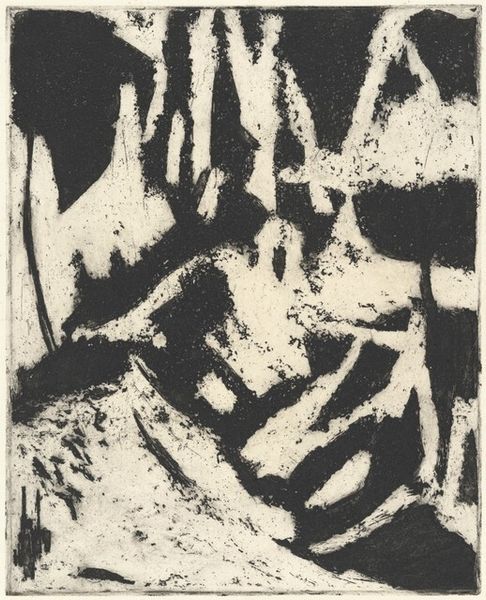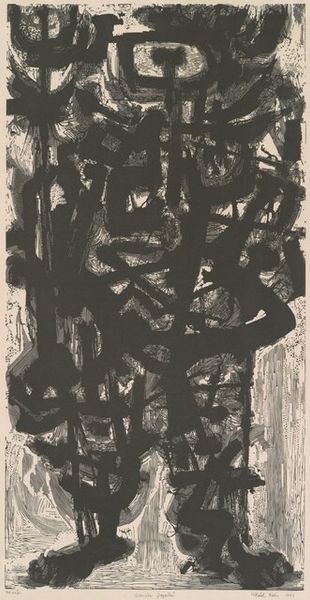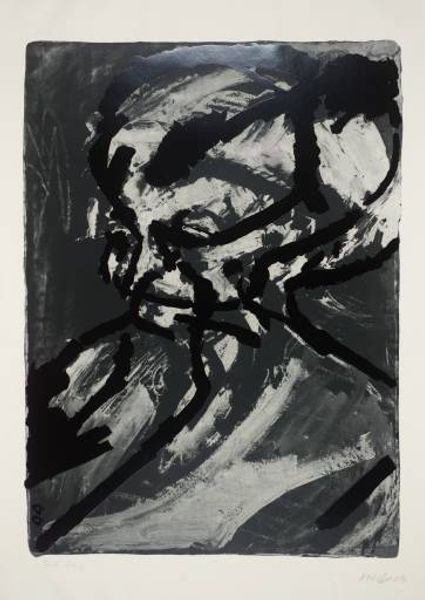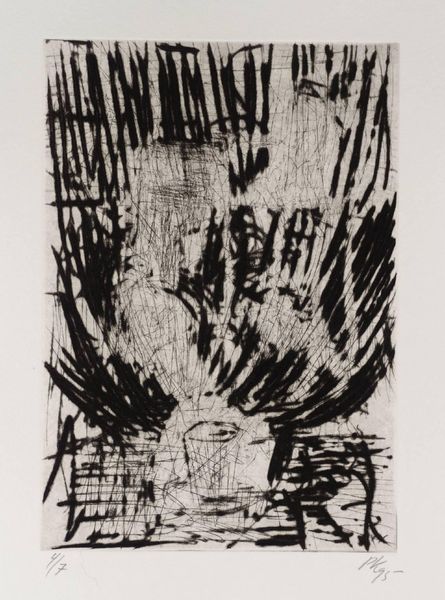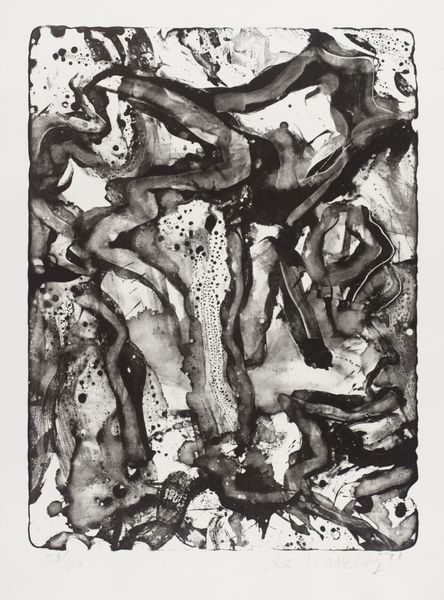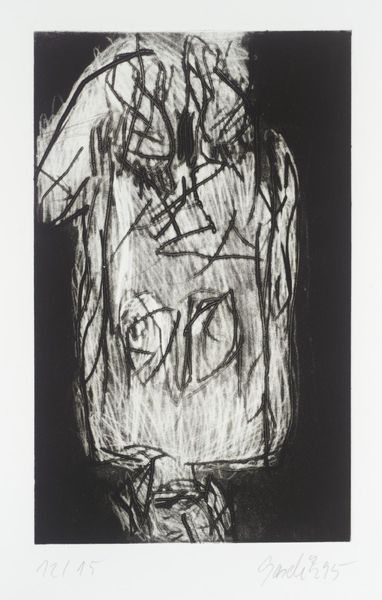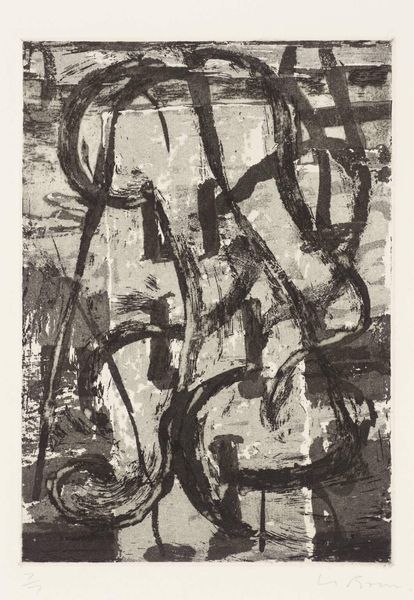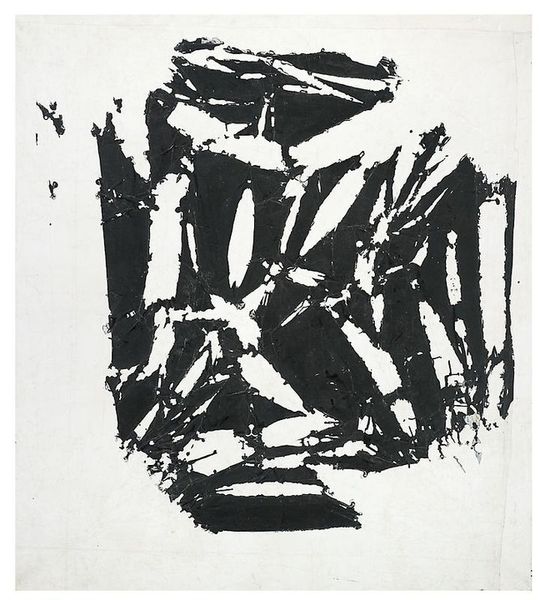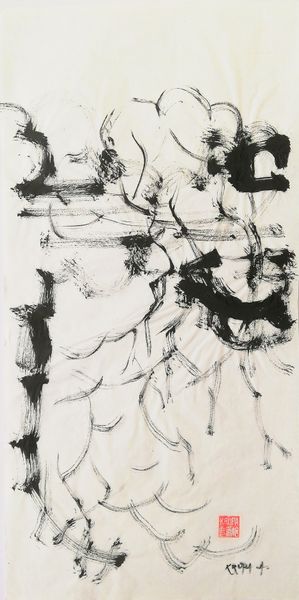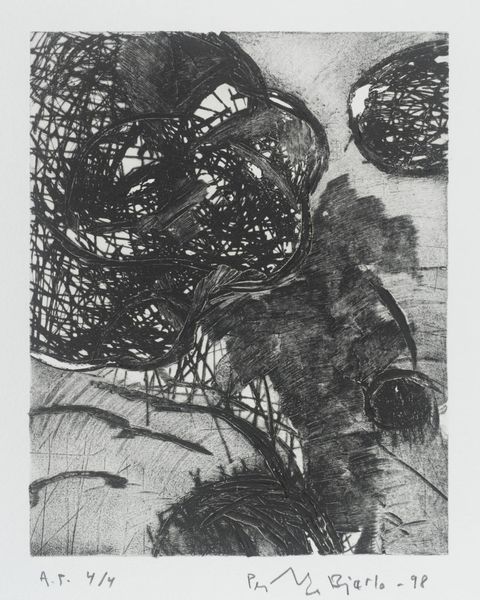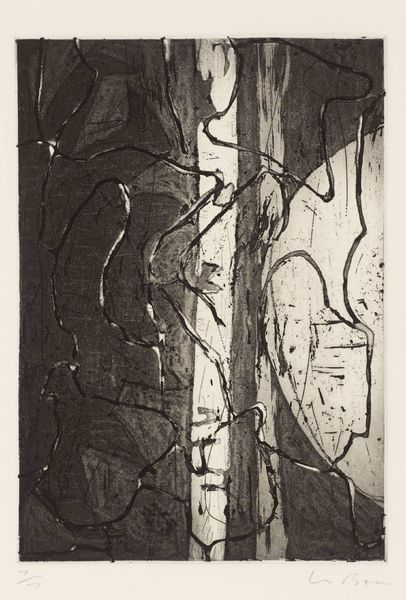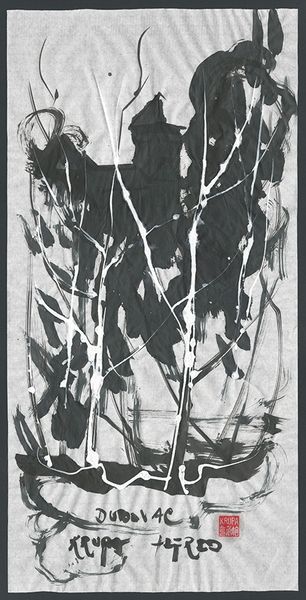
Copyright: National Gallery of Art: CC0 1.0
Editor: Misch Kohn's "Kabuki," created in 1954, is a linocut print that I find intensely expressive. The stark contrast and interwoven lines almost seem to vibrate with energy. What's your interpretation? Curator: "Kabuki"—yes, a potent title suggesting theatricality and stylized movement. The density of the black lines, achieved through the linocut technique, certainly evokes the heavy makeup and elaborate costumes of Kabuki theatre. Notice how the abstraction doesn't fully obscure; there’s a sense of layered forms, almost masks within masks. What emotions do these interwoven shapes conjure for you? Editor: A sense of controlled chaos, perhaps reflecting the stylized performances you mentioned. But how much does the historical context inform our understanding of this work? Was Kohn influenced by the actual Kabuki or rather its symbolic weight? Curator: Kohn was working in America during the mid-20th century, a time of both great prosperity and simmering anxiety. Kabuki, as a foreign art form, could represent both an exotic allure and a potential cultural confrontation. The artist may have been less interested in directly replicating Kabuki and more drawn to its capacity as a symbol, filtered through memory. What symbolic meanings do you perceive beyond the direct reference to theatre? Editor: I guess, perhaps themes of performance, identity, or the tension between tradition and modernity. The black and white also create such a stark dichotomy! Curator: Precisely. The absence of color intensifies the emotional impact, distilling the complexities of the subject to its essence. The artist is really focusing on the essence and distilled memory of Kabuki rather than any direct connection. It almost feels primal. Are we influenced by visual cultural memories, even if faint? Editor: Definitely. I now see it as not just a depiction, but an emotional response mediated through cultural understanding. Curator: And the enduring power of symbols lies in their ability to bridge those very gaps in understanding, sparking conversations across time and cultures. This work certainly achieves that!
Comments
No comments
Be the first to comment and join the conversation on the ultimate creative platform.
